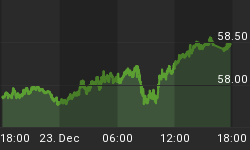Last week, the leaders of Brazil, Russia, India, China, and South Africa met in New Delhi for their fourth annual "BRICS" summit. The meeting brought together five countries that together represent 43 percent of the world's population and 18 percent of the world's GDP. (More importantly, the group is currently attracting 53 percent of global financial capital.) When the gathering concluded on March 29, the coalition subtly issued its latest challenge to the increasingly desperate bankers and politicians of the West. They announced more definitive plans to establish a BRICS-focused development bank, to be solely funded by the BRICS countries themselves. Such an institution could allow this emerging bloc to pursue independent policies on the world stage, thereby challenging the global financial dominance of the World Bank and the International Monetary Fund (IMF), which for nearly 70 years have served as powerful monetary levers for Western interests.
If the BRICS countries continue to develop in the present trajectories, I believe that in five or ten years they will have the ability to fund their bank at levels that could challenge Western institutions (for why we think Indonesia should be included in the BRICS, see our latest global investor newsletter). If so, the duel between these international banks may be the arena where the world decides what sort of money it really prefers. The contenders will be the debased fiat money of the Anglo-American led debtor nations and a currency backed by the nations whose citizens are awash with savings and whose economies churn out needed goods.
The current monetary system can trace its genesis to the Bretton Woods conference that took place in the waning days of the Second World War. As a result of the massive wartime expenditure and destruction, Europe, Russia, and most of the world were near bankruptcy. In contrast, the United States had flooded the world with high quality consumer goods and had accumulated vast surpluses. Its currency, the dollar, was convertible to gold at the fixed rate of $35 an ounce. The U.S. dollar, then, was the clear choice for the international reserve standard. The pre-war Keynes-inspired Anglo-American tendencies were later imbedded in new international supra-governmental bodies such as the International Monetary Fund (IMF), the World Bank, and in the Security Council of the United Nations.
Sixty-eight years later, the Anglo-Americans have greatly increased the powers and size of central governments and central banks. Governments have accumulated unimaginably irresponsible levels of government debt and debased their currencies almost beyond recognition. This has discouraged savings and investment. But if the extraordinary government spending comes to an end, and the monetary spigots were to switch off, these economies would face severe recession, leaving vote-seeking politicians with few good options. On the other hand, those countries with robust industries, high levels of savings and investment, low levels of government debt, and more sensible economic policies, have accumulated vast reserves (this mirrors the rise of America in the late 19th Century).
While the BRICS have accumulated impressive aggregate reserves of some $4 trillion, the U.S. Treasury alone has incurred debts of some $15.4 trillion. Furthermore, American politicians plan on increasing their debt by at least $1 trillion a year into the foreseeable future. It is clear to many that the continued monetary dominance of the Anglo-Americans is no longer deserved.
This fundamental struggle, with no real prospect of compromise, stands at the epicenter of the future world clash over money and power. Led by China, the BRICS appear to favor an alternative to the U.S. dollar, lest they continue to chafe under the yoke of a monetary system that is based on increasingly shaky economic fundamentals. In my opinion, they must clearly be striving for a new international reserve standard linked to gold to replace the current monetary regime.
Now, the BRICS are pressing for the rapid realignment of control for international funding. Struggling countries may wish to align themselves with this new source of support. Eventually, other resource rich nations, such as Chile and Indonesia, can be expected to throw in their lot. In addition, if the United States continues to place all its faith in the printing press, some savings rich Western nations, such as Germany, Norway or Switzerland may be tempted to join the BRICS in their drive for a new world order based on sounder money.
It appears, then, that the sun is setting on the era of the unrestrained printing press. When the new day dawns, the path to renewed freedom and enterprise likely will be paved, not with paper, but with gold and silver, impacting prices accordingly.
Subscribe to Euro Pacific's Weekly Digest: Receive all commentaries by Peter Schiff, John Browne and other Euro Pacific commentators delivered to your inbox every Monday.
Pre-order a copy of Peter Schiff's new book, The Real Crash: America's Coming Bankruptcy - How to Save Yourself and Your Country, and save yourself 35% off!















